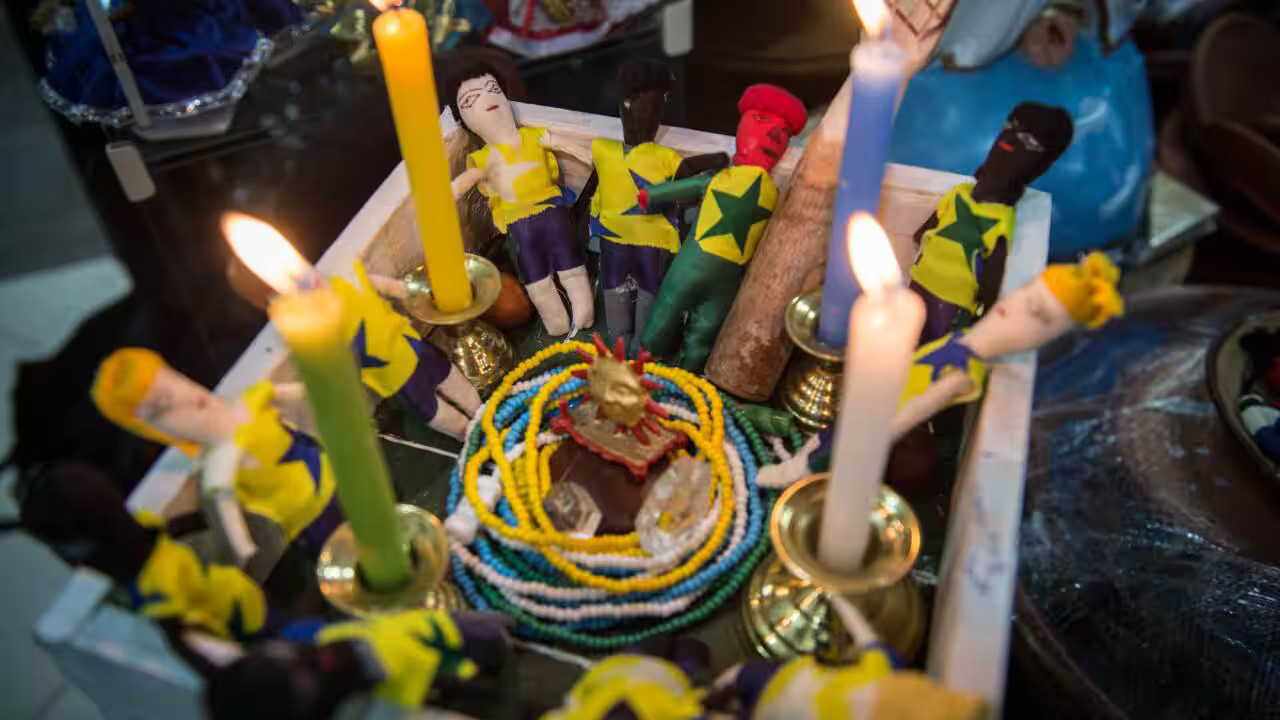
when Horror Yearbook – Voodoo has often faced stereotypes that distort its true meaning. For generations, the faith has been linked to dark imagery, misunderstood rituals, and Hollywood myths. Movies have portrayed it as a tool of evil, focusing on zombies and black magic. In reality, Voodoo holds deep cultural, spiritual, and communal values. Its foundation rests on community connection, respect for ancestors, and the harmony between the living and the spirit world. Followers embrace people from all walks of life, showing compassion and acceptance. This religion developed through centuries of resilience, shaped by the struggles of enslaved Africans in the Caribbean. It became more than faith; it became a symbol of strength and identity. As the world learns more about Voodoo, its message of unity and spirituality is reaching beyond its birthplace, inviting outsiders to understand rather than fear.
Voodoo emerged in Haiti during the 16th century, shaped by the painful history of slavery. Enslaved West Africans arrived in Hispaniola with their beliefs, merging them with local Caribbean traditions and French colonial influence. Voodoo grew from resistance, a way to keep identity alive when freedom was stripped away. People carried memories of their ancestors, rituals, and songs across the ocean. These elements evolved into a powerful cultural system. Voodoo became a foundation for solidarity among the enslaved. They used faith as strength against dehumanizing conditions. Over time, Voodoo influenced the Haitian Revolution, symbolizing hope and defiance. Unlike the distorted stories spread by outsiders, Voodoo is rooted in dignity and survival. This origin story reveals why the faith holds a strong sense of pride. It reflects centuries of pain, courage, and unwavering cultural preservation.
“Read about: 5 Haunted Places in Auburn Alabama That Will Give You Chills This October”
Voodoo teaches that spiritual beings called Lwa act as intermediaries between humans and divine forces. Each Lwa represents specific aspects of life, from fertility to death, from the sea to the sky. Followers form personal relationships with chosen spirits, creating intimate bonds through rituals, songs, and offerings. Lwa are not feared; they are respected and honored. Voodoo practitioners view them as guides, protectors, and companions. Bondye, the creator, stands above all but remains distant. People connect to the divine through Lwa, who bring messages and blessings. These spirits appear in art and rituals, often represented as animals or human figures. Communities adapt their Lwa to their environment, creating unique traditions across regions. This spiritual structure forms the heart of Voodoo practice. It offers believers a clear sense of balance between the physical and spiritual worlds, weaving faith and daily life together seamlessly.
Voodoo rituals are vibrant and deeply symbolic. They involve music, dance, and offerings to honor Lwa. Communities gather to celebrate, ask for blessings, or give thanks. Rituals may happen for many reasons, including healing, protection, or prosperity. Colors, music, and gestures all carry meaning. For example, rituals to honor Agwe, the spirit of the sea, use blue and white garments, shells, and maritime symbols. Participants offer food and drink to invite his presence. These rituals are not dark magic. They are cultural expressions rooted in centuries of spiritual practice. Unlike Hollywood myths, Voodoo does not center on harm or evil. Instead, it focuses on connection, gratitude, and spiritual balance. Communities keep these ceremonies alive with great care and respect. Through rituals, Voodoo preserves identity and strengthens bonds between generations, ensuring that traditions remain vibrant and meaningful.
One of the most misunderstood elements of Voodoo involves spiritual possession. Western portrayals often depict possession as demonic or dangerous. In Voodoo, possession is a sacred experience. Practitioners believe that Lwa can ride a person like a horse during ceremonies. The person becomes a vessel to convey messages from the spirit world. This moment is filled with song, dance, and community support. It is not feared; it is celebrated as a direct connection with the divine. Misunderstanding grew because outsiders viewed it through foreign religious lenses. In reality, Voodoo possession represents trust and closeness between human and spirit. It shows how deeply spiritual and emotional these gatherings are. By learning the true meaning behind possession, people can see the beauty of Voodoo rituals instead of fearing them. Education and understanding replace stereotypes with respect and awareness.
The faith developed alongside Christianity, especially Catholicism. Enslaved Africans were forced to convert but kept their spiritual beliefs alive by blending them with Catholic symbols. Many Lwa are associated with Christian saints, reflecting this history of survival and adaptation. Followers often open ceremonies with Catholic prayers before honoring their spirits. This blending of traditions allowed enslaved people to preserve their faith under oppressive conditions. It is not a Christian denomination, but it shares themes of morality, community, and spiritual devotion. The faith evolved over centuries, carrying layers of history and resistance. It became a cultural identity that cannot be erased by colonial narratives. This tradition stands as proof of how faith can adapt, grow, and protect a people’s soul. This connection to Christianity adds depth to its rituals and reveals the resilience of its followers.
This article is sourced from idntimes and for more details you can read at horroryearbook
Writer: Sarah Azhari
Editor: Anisa